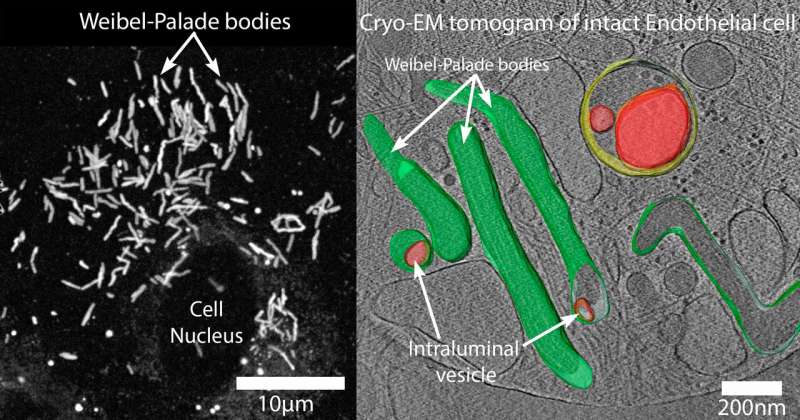Credit: St. George's University of London
Small lipid vesicles known as extracellular vesicles are of great interest to cell scientists since it has been discovered that they mediate intercellular communication.
Now, Professor Tom Carter's group has identified a novel pathway for the storage and release of these vesicles from vascular endothelial cells.
Working in collaboration with Dr Peter Rosenthal of the Francis Crick Institute, the group's research centred on a particular type of extracellular vesicle known as 'exosomes'. In a process called exocytosis, exosomes are released into the blood or tissues where they mediate communication between cells.
Prof Carter's group discovered that exosomes can also be released during Weibel-Palade body (WPB) exocytosis. WPBs are a specialized secretory granule containing the blood coagulation factor, von Willebrand factor, and a cocktail of pro-inflammatory molecules involved in fighting infections. Exosomes derived from WPBs appear to have a distinct molecular signature from other exosomes and that indicates that they may have a unique or specific set of functions when released into the circulation. Current efforts are focused on trying to identify those specific functions.
Prof Carter said: "We identified the lipid vesicles inside WPBs using cutting edge cryo-electron tomography techniques. Direct visualization of WPB intraluminal vesicles and their secretion as exosomes from living endothelial cells was carried out using high speed fluorescence imaging".
The paper, "Stimulated release of intraluminal vesicles from Weibel-Palade Bodies," was published in Blood on 14 February 2019.
More information: James Streetley et al. Stimulated release of intraluminal vesicles from Weibel-Palade bodies, Blood (2019). DOI: 10.1182/blood-2018-09-874552
Journal information: Blood
Provided by St. George's University of London























